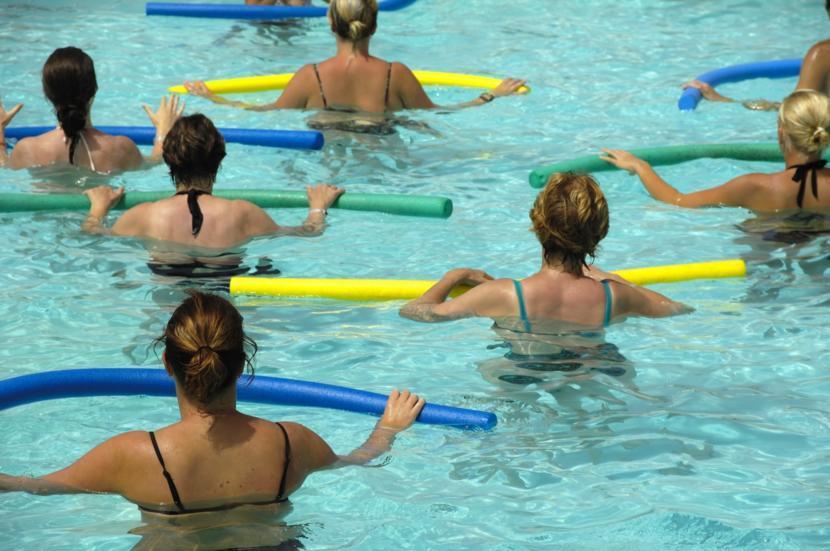Water Therapy for Rheumatoid Arthritis

Anyone with rheumatoid arthritis knows what it is like to have pain that can only be managed, not defeated. Painkiller drugs only go so far in dealing with the pain, and can have unfortunate side effects. Plus, they are not cheap. Tylenol does not cut it.
Ever since humanity has felt pain, there have been different ways of dealing with it. Before the advent of technology, people used everything from drinking willow bark tea to purposefully stinging themselves with stinging nettle.
That hurts, but proponents say the relief is stronger than and lasts longer than the pain.
However, you do not need to flog yourself with a plant to treat your pain. There is a technique used by people all over the world which has borne out investigation to hold up as a treatment for rheumatoid arthritis and other pain, at least as an adjunct method of pain relief.
For some, it involves relaxing in a hot spring. Others visit the ocean, or even float in their hot tub. Some people exercise underwater, other people just enjoy the buoyancy. These are all under the umbrella of water therapy.
A brief history of water therapy
Water therapy is also known as hydrotherapy or balneotherapy. No, it’s not when someone sprays you down with a hose. Water therapy involves submerging yourself in water.
Sometimes the soak is the point. Natural hot springs have been used as spas practically since their discovery. Sometimes people would cross entire continents to bathe in particular hot springs known to be healthful.
Bath, Somerset, in England, is one such example.
Eventually people discovered that they could heat water on their own, so they no longer had to travel long distances to pursue the hope of pain relief. The ancient Roman baths are well known and used to be a daily part of their lives. The Finnish sauna, Japanese onsen, and Turkish bath are more examples.
The sea was another popular destination for pain sufferers. People often visited or moved to the ocean to seek relief from their ailments. Warmer waters were preferred, and indeed, warm water is more efficacious.
The use of water to relieve pain eventually fell out of favor as painkiller drugs were developed. It was not out of the picture for long, though.
Water therapy saw a sharp revival in the Victorian era and remains popular today, in several forms. The options are not limited to submerging in warm water either. Some proponents recommend cold water, or alternating between hot and colt. Sometimes salt is added.
Exercises can also be performed underwater. Not just swimming, but weight lifting as well, and this aqua therapy also has benefits for rheumatoid arthritis sufferers!
Anti-gravity on Earth
NASA trains their astronauts for microgravity situations using gigantic swimming pools. While you may not have such grandiose plans ahead of you, the same function is part of the key why water therapy helps treat RA pain.
Every minute of every single day, gravity pulls down on you. Whether you are lying down or standing up, this force pulls everything downward. Rheumatoid arthritis compresses the joints, which combines with gravity to increase the stress on the joints.
When you are underwater the water itself acts as a buffer against gravity. You float and your joints float as well, which eases some of the compression on the joints. This reduction in stress helps lower the amount of swelling and inflammation, which are major contributors to the pain inherent to RA.
So not only do you relax, but your joints relax as well, while underwater. You could also go to space and get a probably similar effect, but the cost of the commute to work might not be worth it. If you thought pain medication was expensive, look up the price of a rocket launch.
Good for the body and emotions
This relaxation is not limited to the joints. Except for people with a phobia of water and swimming, the vast majority of people find swimming to be relaxing.
Ensure the water is warm, and float in a saltwater environment such as a calm ocean, some hot springs, or a salt water bath, and the salinity helps lift you even further. Even more relaxing!
This relaxation has tangible effects on your body. Stress can contribute to pain or at least draw your focus to the pain. There are studies that show that the emotional and psychological benefit of water therapy does not extend to the duration of the soak, and can in fact extend for several days afterwards.
The pain relief aspects last longer than the bath does, as well.
Water therapy at home
It is not terribly difficult to practice water therapy at home, so long as you have a bathtub.
The first step is to drink plenty of water. Prolonged soaking in water can have a dehydrating effect, so make sure you are well hydrated beforehand.
Then, fill your bathtub with hot water. The temperature should be on the warm side, but not too warm that you feel discomfort.
Finally, get in the water and relax! Experts recommend that you soak for at least twenty minutes to feel some relief, but soaking for longer is good as well.
If you find your mind racing about subjects other than the relaxing bath, you may need a distraction. Some people find success in this endeavor by reading a comfortable book or sipping a nice beverage. The goal is to relax so try not to get caught up in stressful thinking.
Some people recommend finishing the warm water session with a cold water session. A good way of doing that may be to drain the bath and take a cold shower. This burst of cold water does not have to last long.
The temperature change is supposed to improve circulation and decrease swelling even further. If done successfully you may feel flushed at first, but that should turn into internal warmth and energy.
You can improve the efficacy of the bath by adding salt to the water. Try using Epsom salt, not table salt.
There also exist soaking mixtures, some of which contain essential oils that some people claim to have health benefits.
Water therapy outside the home
You do not have to limit yourself to your own tub. Most cities have facilities you can use for water therapy, either alone or under an instructor. Some swimming pools have hot tub sections. Spas are also common.
There are health care facilities that have water therapy units now as well. If your pain is severe, hiring someone who knows how to maximize your water therapy benefits may be a good idea.
If you live in an area with natural hot springs, even better. Or take a swim in the ocean, so long as you are not fighting choppy waves you will get similar benefits.
Underwater exercise
Exercise is beneficial to nearly everybody, but it can be painful to try to power through the pain caused by RA. Whoever said “no pain, no gain” obviously did not have rheumatoid arthritis!
Exercise is known to bring pain relief to people with RA. Actually performing the exercise can be the hard part though, as a little bit of pain relief in the future can sometimes seem like a poor prize for the pain experienced today.
This is where underwater exercise steps in to play. Because of the anti-gravity of effects described earlier, your joints are under less stress underwater. This lets most people exercise underwater without the pain associated with RA.
Often people with RA have weaker muscles on average than those without the disorder. Underwater exercise can help increase your muscle mass and strength with less discomfort than you might feel without the water supporting your body.
Facilities which have adopted this tactic are increasing in number. Underwater exercise is used for physical rehabilitation due to its low impact nature, so you may be able to find such an instructor at a place known for rehabilitation.
Sometimes you can find classes at gyms with swimming pools as well.
Final thoughts
Hydro therapy involves submerging yourself underwater to relieve pain. It can reduce swelling, support your joints, relax your body and mind, and provide a measure of pain relief even after you get out of the water.
Historically people traveled to public baths, the ocean, or natural hot springs in order to undergo water therapy. Today you have the choice of doing the same thing or taking advantage of your bathtub in the comfort of your own home.
References
https://ra.newlifeoutlook.com/water-therapy-rheumatoid-arthritis/
http://europepmc.org/abstract/med/3576139














